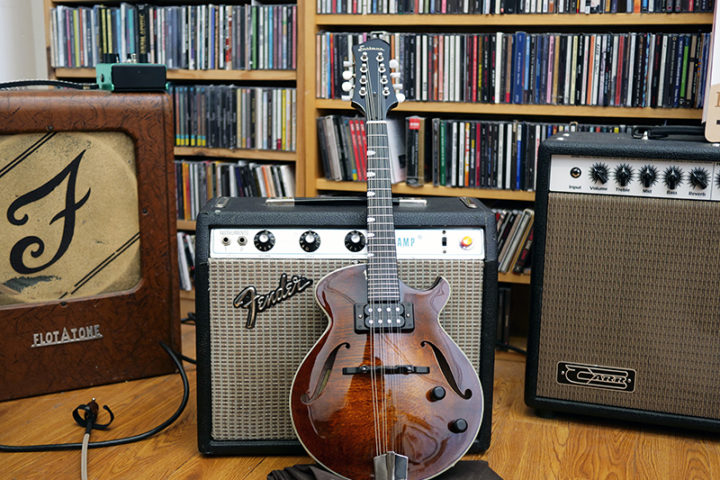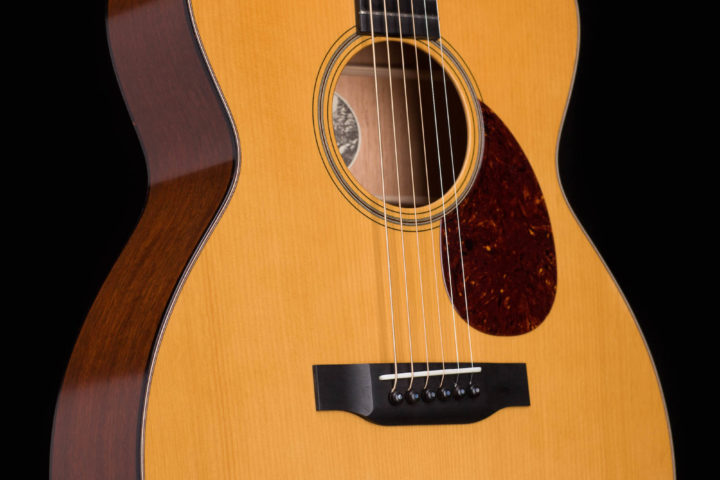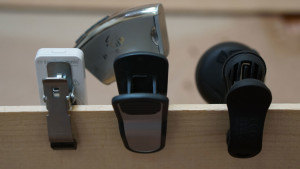
Apparently, #WhenIWasYourAge was “trending” on The Tweety-Ma-Jig recently. Well, I have no idea how old you are, so I shall not presume, but, if you’ll permit, I will expose a bit of my inner curmudgeon to mention that, when I first started playing guitar, tuning up was somewhat more of an ordeal than it is now. Our ears were the primary tools at our disposal, assisted by tuning forks, pitch pipes, other players, the occasional piano, once in a while a record. Hands up if you remember walking into a band rehearsal or a jam session and saying, “Gimme an E…” There weren’t a lot of keyboard players in my world back then, so we’d just trust that someone was real close to being actually in tune.
Tuning has come a long way, needless to say. These kids these days have clip-on tuners and stomp-box tuners and apps on their phones and even guitars that tune themselves. In this week’s Hands On, we’re going to take a look at a few tuners of the clip-on variety, covering the range of what’s out there, from basic to fancy: the Snark SN-1, the TC Electronic PolyTune Clip, and the Peterson StroboClip (list prices: $29, $74.99 and $99.99, respectively).
Here’s (basically) what these tuners have in common:
- They clip fairly securely to your guitar’s headstock and can accommodate multiple positions/viewpoints (e.g. left- or right-handedness, front or back of the headstock).
- They allow users to calibrate their base pitch and provide for flattened/dropped/alternate tunings.
- They run on CR2032 “coin-cell” batteries.
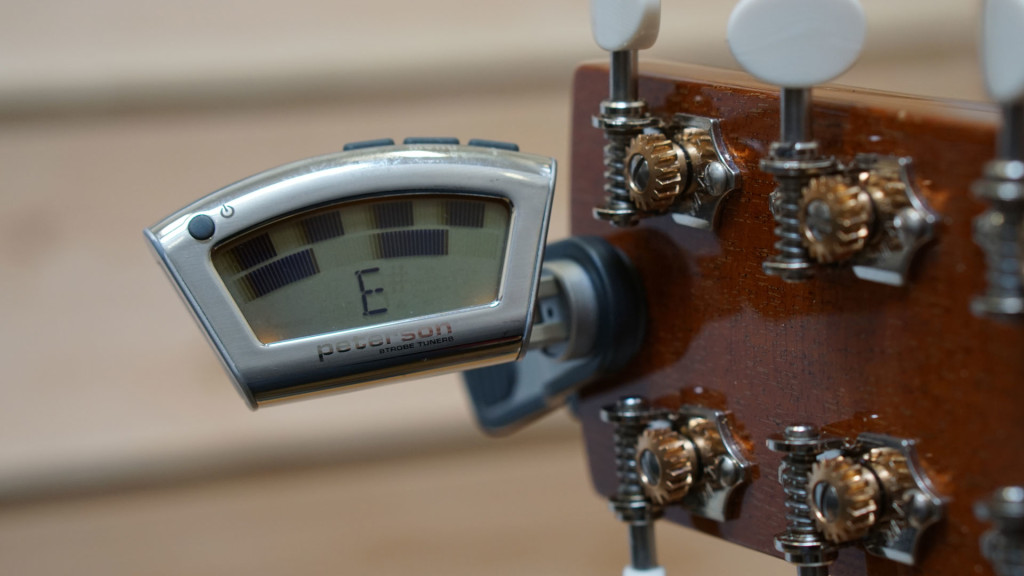
Here’s (basically) how they differ:
Accuracy
Snark doesn’t publish their accuracy estimates, but an Internet search suggests +/- 1 cent; TC Electronic claims +/- 0.02 cents in its Strobe mode; Peterson says the StroboClip is accurate to within +/- 0.1 cent.
Displays
All three have illuminated displays that differ slightly in appearance and in their presentation of tuning information. The PolyTune offers “Needle” or “Strobe” mode, as well as their own “Polyphonic” mode (strum all the strings and get a good look at all six strings). The PolyTune provides the brightest display. The StroboClip uses a backlit, monochromatic LCD display that can occasionally be challenging to read. The PolyTune and StroboClip both turn off automatically after three minutes of “idle” time. The Snark dims after five seconds and turns off after two minutes.
Construction
The SN-1 is pretty much plastic; the PolyTune and StroboClip are varying combinations of fancier plastic and stainless steel. They all have some sort of rubber feet where they clip on; Snark and TC Electronic provide fairly standard warnings that their feet may damage certain finishes. Subjectively, none of them ooze with the appearance of sturdiness, but the PolyTune’s stainless steel clip does give one a bit more confidence.
Features
The Snark has a built-in metronome. It accommodates “flat” tunings via controls on the back that allow the user to change the tuning a half-step at a time. Hit the♭once and a single♭symbol appears on the display, causing an actual F to display as an E, ostensibly for guitarists who place a capo on the first fret and can’t wrap their brain around their open strings being F-B♭-E♭-A♭-C-F instead of E-A-D-G-B-E. [Too snarky?]
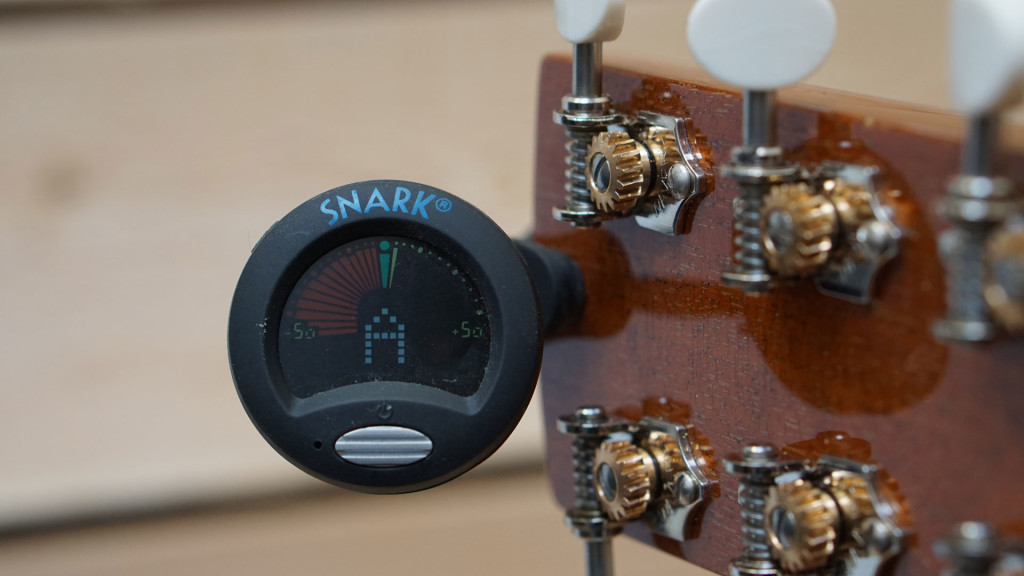
The PolyTune Clip has the aforementioned multiple modes for tuning: Polyphonic, Needle (chromatic), and Strobe (chromatic). In its default mode it will automatically flip between its Polyphonic and chromatic Needle modes, detecting whether you’re playing a single note or strumming all six strings. You can also turn off the Polyphonic capabilities, and there are Needle and Strobe modes for bass guitar (but no Polyphonic mode). Like the Snark, it says it accommodates tuning down or using a capo, but these Flat Tuning and Capo modes only affect polyphonic tuning; it will still display the actual pitch (e.g. E♭) when playing single notes (and, in one of its odder quirks, although the modes will display as flatted notes, when you’re tuning the display uses the sharpened equivalents, so when you’re in E♭ mode you’re tuning to D♯).
The StroboClip has the Drop/Capo/Key change modes (like the Snark, when you’re using these modes, the tuner displays E-A-D-G-B-E rather than the actual pitch), and it has “sweetened” tuning modes that support actual alternate tunings, including DADGAD, pure and half-tempered tunings for open A, D and G tunings for resonators, A6 and C9 for lap steel guitars, Buzz Feiten tunings, banjo tuning, bass, lute, ukulele, Uilleann pipes, oud, etc. I must confess, the standard “sweetened” tuning does seem sweeter, though I suppose a discussion of sweetened tunings is a bit much to bite off in a Hands On column… There is also a “Sustain” mode for the display that helps compensate for instruments without much sustain, holding the display in place for longer than the note’s actual duration.
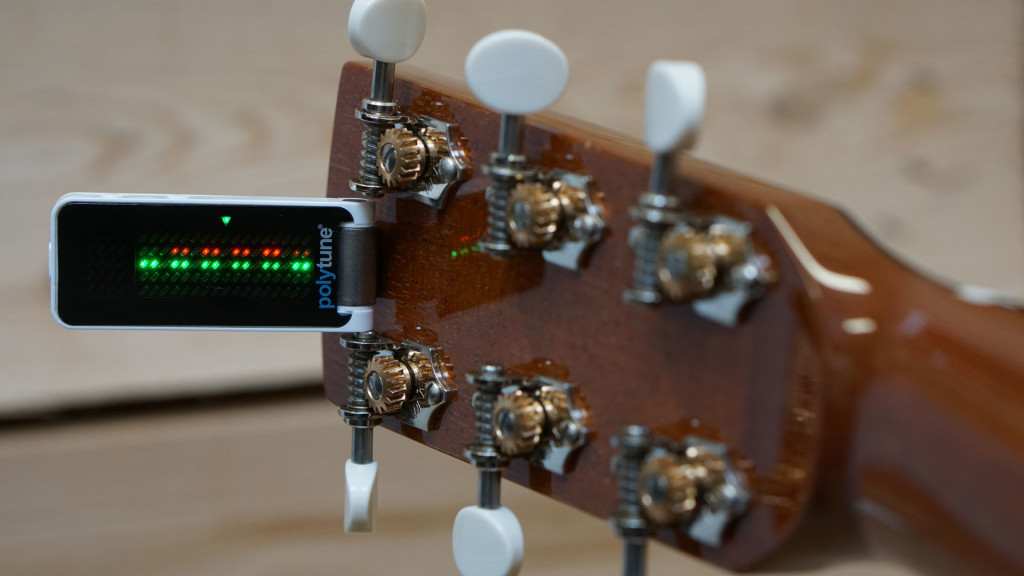
So, which one?
The Snark is a nice, no frills, easy-to-read tuner, but it’s not especially sensitive or accurate and the battery life always seems worse than it probably is. The PolyTune is the newest of the bunch and apparently the most accurate, with the brightest display; the only real negative we encountered was a tendency to turn itself off unexpectedly, even mid-tuning (i.e. in less the stated 3-minutes of idle time). The StroboClip has all those cool tuning modes and is plenty accurate, but its display can be a little hard to read, and that strobe style of display can be a bit of a pain when you’re tuning a finicky instrument. Frankly, you can’t really go wrong with any of these tuners. They’ve all got points in their favor, and relatively minor strikes against them, so choosing one really comes down to priorities. In my personal experience, you buy all three and use whichever one you can find first, or whichever one doesn’t need a new battery.
